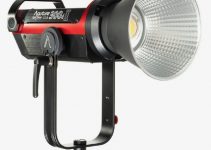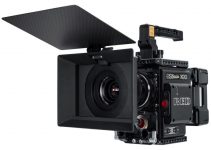Apple’s 15-inch MacBook Pros are undoubtedly at the top of the list for many creative professionals looking for a viable option when it comes to reliable and efficient video editing on-the-go. With increasingly impressive specs updated with every new iteration, these laptops come packed with the latest components from Intel and AMD, aiming to deliver enough power and speed required to tackle even the most demanding workflows on the fly.
With Apple having refreshed their MacBook Pros roughly every six months, including the latest top-of-the-line model with the new Vega 20 graphics processor, it’s interesting to figure out how much of a performance bump consumers should expect from each laptop in the line. Tech expert Max Yuryev seeks the answer by comparing four different 15-inch 2018 MacBook Pros, testing each machine’s editing performance inside of Final Cut Pro X.
Before looking at the test results, let’s first have a closer look at the tech built into each machine. The latest model featured in the video is an October 2018 MacBook Pro with a 2.9GHz Intel Core i9 Six-Core Processor, the new Vega 20 GPU with 4GB of VRAM, and 32GB of DDR4 Memory.
There are two other 2018 MacBook Pros used in the comparison. One of these has a 2.9GHz Intel Core i7 Six-Core processor with a Radeon 560X 4GB GPU and 32 GB of DDR4 RAM. The other MacBook runs a 2.2GHz Intel Core i7 Six-Core processor, Radeon 555X 4GB GPU, and 16GB DDR4 RAM.
The last computer used in the comparison is a 2016 MacBook Pro with 2.9 GHz Intel Core i7 Quad-Core, Radeon Pro 460 Graphics with 4GB VRAM and 16GB of DDR4 memory. Additionally, all the laptops listed above come with 512GB SSDs, all of which differ in read and write speeds due to evolving storage technologies.
Moving into the experiment, Yuryev first tested the machines by stabilizing a 20-second 4K video inside of Final Cut Pro X. Compared to the 2016 MacBook Pro, the Vega 20 machine cut processing time in half. The time saved with the Vega 20 laptop, though, can be easily neglected when compared to the other 2018 MacBook Pros.
The next test involved rendering out a 5-minute 4K H.264 project with two LUTs and Film Grain applied. Once again, the Vega 20 model ended up as the fastest machine in terms of render time, however, only barely so compared to the 555X and 560X variants. Surprisingly the 2016 model was able to outperform the 555X machine.
Another test was conducted with similar project specifications. This time around Yuryev took 8-bit 4K footage using the HEVC codec, rather than H.264. Overall, all the 2018 MacBook Pros performed relatively the same to one another, with the Vega 20 machine being slightly faster. On the other hand, the older 2016 MacBook Pro was left behind in the races due to the lack of native support of HEVC.
As a bonus test, Yuryev tried to test out editing and rendering 4K 60fps HEVC 10-bit footage from the Fujifilm X-T3. Unfortunately, Apple’s machines – including its highest-end Vega 20-equipped laptop – doesn’t support proper hardware encoding for HDR video. This limitation led to significantly poor rendering times of almost 4 hours for a 5 minute 10-bit clip. With these results, the HEVC 10-bit codec only faired worse on older machines.
As a side note, Yuryev pointed out that this limitation only appears when doing a final render. When rendering the timeline itself, the Vega 20 machine could properly playback the footage with no dropped frames. Furthermore, the Vega 20 laptop worked seamlessly when processing rendering 8-bit footage as opposed to 10-bit.
Transitioning to more taxing codecs, such as ProRes and different versions of RAW, a pattern emerged between all the systems tested. Each project for the remainder of the test were 5-minute timelines exporting from 4K to H.264, varying in the codec used.
When testing each machine using ProRes RAW, once again, there wasn’t a significant improvement between the Vega 20 laptop versus the 560X unit. Furthermore, while the 2018 55X and 2016 460 GPU machines were slightly slower, all computers performed comparably. However, when exporting to ProRes 422 instead of H.264, the Vega 20 laptop surpassed significantly the 2016 and 2018 MacBook Pro models in render times.
Looking at C200 RAW footage, there does seem to be a larger discrepancy between the machines. The Vega 20 computer produced the lowest rendering time among the laptops, clocking in at 13 minutes.
The other 2018 MacBook Pros came in at around 24 and 18 minutes for the 555X and 560X models respectively. As for the 2016 MacBook Pro, it again outperformed the baseline 2018 model with a render time of 21 minutes – quite impressive result for a two-year-old laptop.
Finally, Yuryev rendered out a project using RED RAW footage, shot in 4.5K rather than 4K. To no one’s surprise, the Vega 20 turned out to be the fastest machine out of the group, though not much faster than the 560X-equipped 2018 MacBook Pro. Meanwhile, the 555X MacBook Pro and the 2016 model came in with render times of 11 minutes and 16 minutes respectively.
It is also worth mentioning that when playing back the RED RAW footage, the 2016 model struggled significantly compared to the 2018 computers. Again, this was attributed to the fact that the newer laptops have processors built with better support for RAW codecs.
In the end, you may be wondering which laptop to buy? If you’re a video editor who needs the absolute best-performing laptop to keep up with heavy production workflows, you may consider investing in the Vega 20-equipped 2018 MacBook Pro. For those tackling lighter video editing projects with ample post-production timeframes, even a baseline model 2018 MacBook Pro will be sufficient.
Ultimately, if you have a 2016 or 2017 15-inch MacBook Pro, an upgrade is not exactly necessary unless you’re starting to work with system-intensive codecs like any form of RAW, or the new HEVC H.265 codec which is increasingly becoming a standard for consumer video these days.
[source: Max Yuryev]
B&H Order Links:
- Apple 15.4″ MacBook Pro with Touch Bar (X560 Model)
- Apple 15.4″ MacBook Pro with Touch Bar (X555 Model)
- Apple 15.4″ MacBook Pro with Touch Bar (Vega 20 Model)
- Apple 15.4″ MacBook Pro with Touch Bar (Late 2016, Space Gray)
Disclaimer: As an Amazon Associate partner and participant in B&H and Adorama Affiliate programmes, we earn a small comission from each purchase made through the affiliate links listed above at no additional cost to you.



